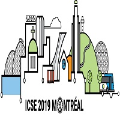The Software Engineering (SE) community has been embracing the open science policy and encouraging researchers to disclose artifacts in their publications. However, the status and trends of artifact practice and quality remain unclear, lacking insights on further improvement. In this paper, we present an empirical study to characterize the research artifacts in SE publications. Specifically, we manually collect 1,487 artifacts from all 2,196 papers published in top-tier SE conferences (ASE, FSE, ICSE, and ISSTA) from 2017 to 2022. We investigate the common practices (e.g., URL location and format, storage websites), maintenance activities (e.g., last update time and URL validity), popularity (e.g., the number of stars on GitHub and characteristics), and quality (e.g., documentation and code smell) of these artifacts. Based on our analysis, we reveal a rise in publications providing artifacts. The usage of Zenodo for sharing artifacts has significantly increased. However, artifacts stored in GitHub tend to receive few stars, indicating a limited influence on real-world SE applications. We summarize the results and provide suggestions to different stakeholders in conjunction with current guidelines.
翻译:暂无翻译





